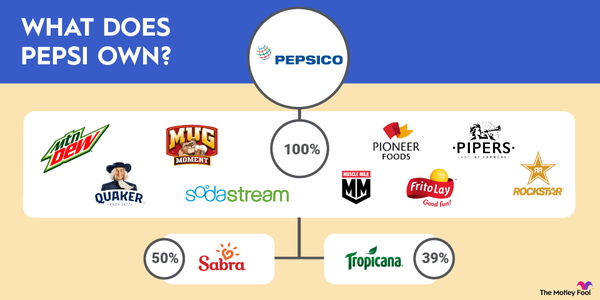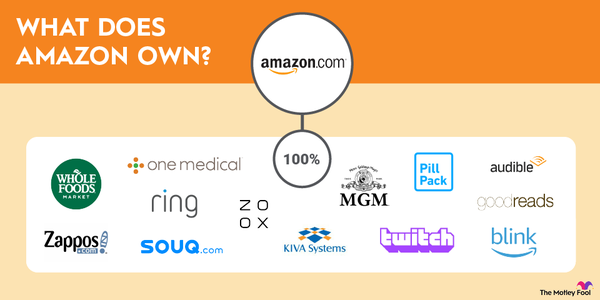Analyzing stocks helps investors find the best investment opportunities. By using the correct analytical methods when researching stocks, it is possible to find stocks trading for a discount to their true value. This, of course, can put you in a great position to capture future market-beating returns.

Stock analysis
Understanding the two types of stock analysis
When it comes to analyzing stocks, there are two basic ways you can go: fundamental analysis and technical analysis.
1. Fundamental analysis
Fundamental analysis is based on the assumption that a stock price doesn't necessarily reflect the true value of the underlying business in all cases. This is the central tool value investors use to find the best investment opportunities.
Fundamental analysts use valuation metrics and other information to determine whether a stock is attractively priced. This type of analysis is designed for investors looking for excellent long-term returns.
2. Technical analysis
Technical analysis generally assumes that a stock's price reflects all available information and that prices generally move according to trends.
In other words, a technical analyst would generally believe that by analyzing a stock's price history, you may be able to predict its future behavior. If you've ever seen someone trying to identify patterns in stock charts or discussing moving averages, that's a form of technical analysis.
One important distinction is that fundamental analysis is intended to find long-term investment opportunities. Technical analysis typically focuses on short-term price fluctuations.
The Motley Fool generally advocates fundamental analysis to seek the best long-term investment opportunities, not the best trades. Fundamental analysts believe investors can beat the market over time by focusing on great businesses trading at fair prices.
Crucial metrics
Learn some important investing metrics
With that in mind, let's take a look at four of the most important and easily understood metrics every investor should have in their analytical toolkit to understand a company's financial statements:
Price-to-earnings (P/E) ratio
Companies report their profits to shareholders as earnings per share (EPS). The price-to-earnings ratio, or P/E ratio, is a company's share price divided by its annual per-share earnings.
For example, if a stock trades for $30 and the company's earnings were $2 per share over the past year, we'd say it traded for a P/E ratio of 15, or "15 times earnings." This is the most common valuation metric in fundamental analysis and is most useful for comparing companies in the same industry with similar growth prospects.
Price/earnings-to-growth (PEG) ratio
Different companies grow at different rates. The PEG ratio divides a stock's P/E ratio by the expected annualized earnings growth rate over the next few years to level the playing field.
For example, a stock with a P/E ratio of 20 and 10% expected earnings growth over the next five years would have a PEG ratio of 2. The idea is that a fast-growing company can be "cheaper" than a slower-growing one.
Price-to-book (P/B) ratio
A company's book value is the net value of all of its assets. Think of book value as the amount of money a company would theoretically have if it shut down its business, sold everything it owned, and paid its debts.
Specifically, the price-to-book (P/B) ratio is a comparison of a company's stock price and the book value of its net assets.
Debt-to-EBITDA ratio
As with your personal finances, a good way to gauge financial health is to look at a company's debt. The debt-to-EBITDA (earnings before interest, taxes, depreciation, and amortization) ratio is a good one for beginners to learn.
You can find a company's total debts on its balance sheet and its EBITDA on its income statement. A high debt-to-EBITDA ratio could be a sign of a higher-risk investment.
Beyond numbers
Look beyond the numbers to analyze stocks
This is perhaps the most important step in the analytical process. While everyone loves a good bargain, there's more to stock research and analysis than just looking at valuation metrics.
It is far more important to invest in a good business than a cheap stock.-- Warren Buffett
With that in mind, here are three other essential components of stock analysis that you should watch:
Durable competitive advantages
As long-term investors, we want to know that a company will be able to sustain (and hopefully increase) its market share over time.
So, it's important to try to identify a durable competitive advantage -- also known as an economic moat -- in the company's business model when analyzing potential stocks. This can come in several forms, including:
- A great brand name.
- Intellectual property, such as patents.
- Cost advantages.
- Distribution advantages.
Great management
A business is only as strong as the executives calling the shots. Ideally, a company's CEO and other main executives will have successful and extensive industry experience and financial interests that align with shareholder interests.
High insider ownership is one important factor to look at. You want situations where those leading the company are set up to make more money if we, as shareholders, do as well.
Industry trends
Investors should focus on industries with favorable long-term growth prospects. Artificial intelligence is perhaps the most notable long-term technology trend to invest in right now.
In addition, cloud computing, payments technology, e-commerce, and healthcare are examples of industries that are likely to grow significantly in the years ahead.
A basic example
A basic example of stock analysis
Let's look at a hypothetical scenario. We'll say that I want to add a home improvement stock to my portfolio and that I'm trying to decide between Home Depot (HD 0.05%) and Lowe's (LOW 0.5%). First, I'd take a look at some numbers. Here's how these two companies stack up in terms of some of the metrics we've discussed:
| Metric | Home Depot | Lowe's |
|---|---|---|
| P/E ratio (past 12 months) | 25.2 | 19.0 |
| Projected earnings growth rate | 5.0% | 4.1% |
| PEG ratio (expected) | 5.0 | 4.6 |
| Debt-to-EBITDA ratio (TTM) | 1.97 | 2.86 |
Here are the key takeaways from these figures: Lowe's appears to be the cheaper buy on just a P/E basis. In addition, although Lowe's has a slightly lower projected growth rate, it has a lower PEG ratio. So, its PEG ratio also shows it could be the cheaper stock.
On the other hand, Lowe's has a significantly higher debt-to-EBITDA multiple, which could indicate that Lowe's isn't quite as financially strong.
I wouldn't say either company has a major competitive advantage over the other. Home Depot arguably has the better brand name and distribution network. However, its advantages aren't so significant that they would sway my investment decision, especially when Lowe's looks more attractive from a valuation perspective.
I'm a fan of both management teams, and the home improvement industry is one that should always be in demand, even if growth slows down and speeds up over time. Plus, both are relatively recession-resistant businesses.
If you think I'm picking a few metrics to focus on and basing my opinions on them, you're right. And that's the point: There's no one perfect way to research stocks, which is why different investors choose different stocks.
Related investing topics
Solid analysis can help you make smart decisions
There's no one correct way to analyze stocks. The goal of stock analysis is to find companies you believe are good values and great long-term businesses. Not only does this help you find stocks likely to deliver strong returns, but using analytical methods like those described here can also help prevent you from making bad investments and losing money.






































































































































































































































































































































